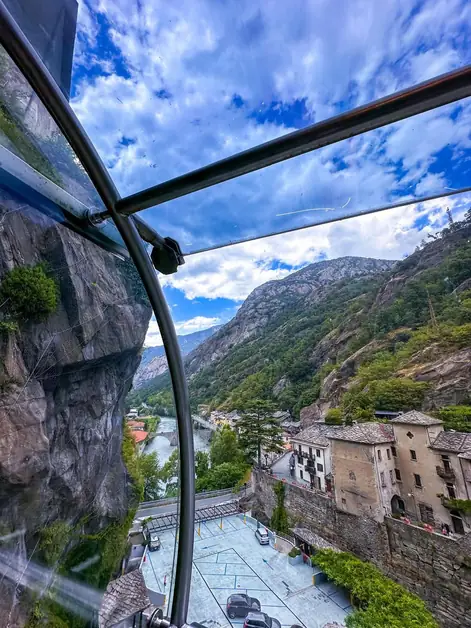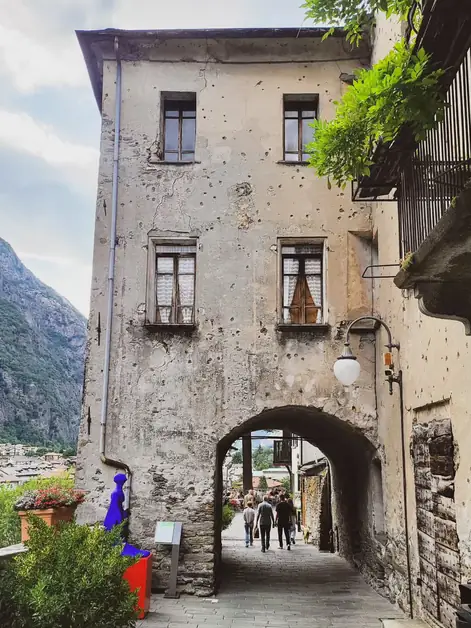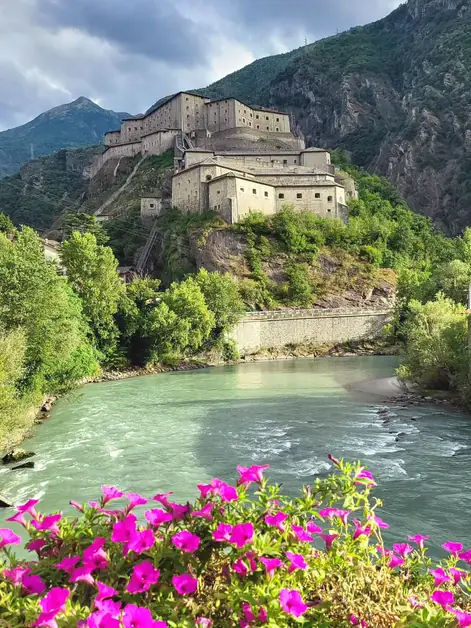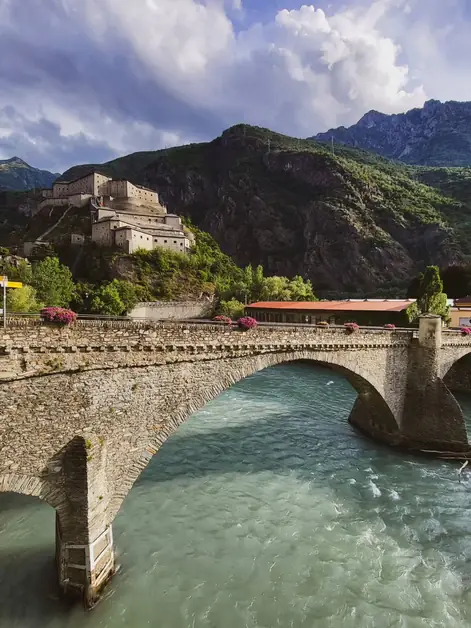Explore the Fascinating History of Verrès Castle
Verrès Castle is an unmissable historical fortress.
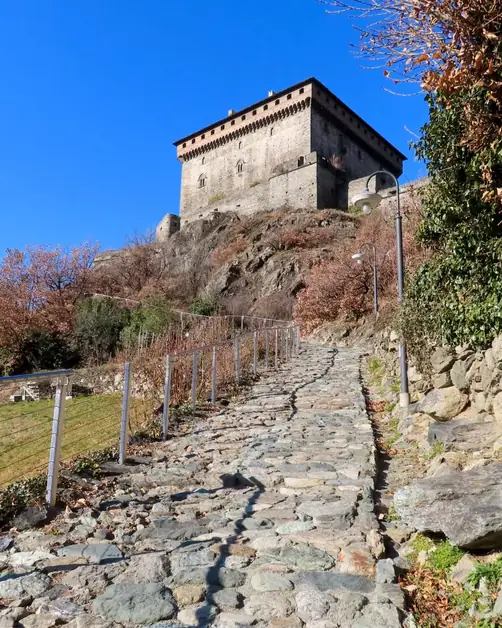
How do you reach Verrès Castle on foot from the town center?
From the center of Verrès, a cobblestone path leads directly to the castle. It is a short but uphill route, characterized by irregular stones and walls that delimit it. Along the way, there are lamps and railings that make access safer. Walking on this path gives the feeling of following in the footsteps of those who, in past centuries, ascended to the fortress for reasons of defense or administration.
What is the external appearance of Verrès Castle?
The exterior of the castle is imposing and devoid of superfluous decorations. Unlike other noble residences, functionality prevails here. The thick walls, reduced windows, and square shape make it look like a gigantic block of stone. Only the upper band with battlements and corbel decorations breaks the linearity of the structure, reminding us of its military function.
What role did the position of Verrès Castle play?
The position of the castle was not casual. Built on a rocky spur, it allowed for control over the communication routes of the central valley and the entrances to the lateral valleys. Its height offered a privileged view of the surrounding territory, making it not only a noble residence but also a strategic point for political and military control of the area.
What materials were used to build Verrès Castle?
The castle is predominantly built of local stone, worked and laid to ensure resistance and durability. The choice of simple and robust materials reflected the need to erect a solid fortress capable of withstanding assaults. The stone, with its dark gray color, contributes to creating the austere appearance that still characterizes the structure today.
In which period was Verrès Castle built?
Verrès Castle was built in the 14th century at the behest of Ibleto di Challant. The architecture reflects the taste and needs of the time: a single quadrangular block, compact and devoid of protruding towers. This innovative choice distinguishes it from many other contemporary fortifications and makes it one of the most interesting examples of Aosta Valley castle architecture.
How does the ascent to Verrès Castle appear in different seasons?
In autumn, the stone path is surrounded by trees with golden and reddish leaves, creating a suggestive contrast with the gray of the walls. In winter, the path may appear more bare, but the castle emerges as an even more severe fortress. In spring and summer, however, the surrounding greenery brings vitality to the landscape, transforming the ascent into a panoramic walk between nature and history.
What events take place at Verrès Castle?
The castle is the venue for numerous cultural events and historical reenactments. Among the most notable is the historical Carnival of Verrès, which celebrates the figure of Caterina di Challant and the medieval tradition of the area. During these occasions, the castle is not just a monument to visit, but becomes the stage for parties, parades, and performances that involve the village and its inhabitants.
What importance does Verrès Castle have today for tourism in Aosta Valley?
Verrès Castle is one of the most visited stops on the Aosta Valley castle circuit. Its easily accessible location makes it ideal as a starting point for discovering other historical sites in the valley. Many tourists include it in an itinerary that also features the Forte di Bard and the Castle of Issogne, creating a route that combines history, architecture, and alpine landscapes.
What atmosphere is felt when arriving in front of Verrès Castle?
Arriving in front of the castle door evokes a sense of respect. The tall, compact walls make one feel small, and the sensation is that of standing before a structure built to last through the centuries. The view of the village of Verrès and the central valley from the cobbled ascent adds charm to the journey, making the moment of entry a memorable experience.
